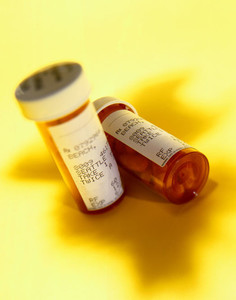The long-awaited guidance for biosimilars in the US has finally arrived. FDA announced on 10 February 2012 that it had issued three draft guidance documents on biosimilar product development to assist industry in developing such products in the US.
FDA had expected to issue the first of its formal guidance documents on biosimilar applications before the end of 2011 [1].
The US has had a legal pathway in place since the approval of the Biologics Price Competition and Innovation Act, which was signed into law on 23 March 2010 by President Barack Obama, but has lacked practical guidance from FDA [2]. However, it is still far behind Europe, which approved its first biosimilar back in 2006.
Ms Janet Woodcock, Director of FDA’s Center for Drug Evaluation and Research said that FDA had taken an ‘innovative approach’ to supporting the development of biosimilars ‘at every step of the process’, adding that ‘these draft documents are designed to help industry develop biosimilar versions of currently approved biological products, which can enhance competition and may lead to better patient access and lower cost to consumers.’
Generics companies and groups are pleased
‘The FDA's draft guidance is flexible, but provides the proper rigor necessary for these complex products,’ said Dr Sumant Ramachandra, Senior Vice President, Research & Development and Medical & Regulatory Affairs, and Chief Scientific Officer, Hospira. ‘Hospira has said that the guidelines should be based on science, and that's exactly what the FDA delivered. Hospira commends the FDA for its continued commitment to support cost-competitiveness and wider patient access to this important class of medications, and we look forward to bringing our products to US patients.’
Industry organisations BIO and the Generic Pharmaceutical Association (GPhA) both released press releases indicating that they were ‘pleased’ with the new draft guidelines. BIO President and CEO Mr Jim Greenwood stated, ‘We look forward to reviewing the drafts in detail to ensure that they comply with our key principles, particularly ensuring patient safety, recognising scientific differences between drugs and biologics, maintaining the physician-patient relationship and preserving incentives for innovation.’
GPhA commented that it saw the new guidelines as ‘an important step in getting these affordable, lifesaving medicines into the hands of doctors and patients’.
The FDA approach is that via the biosimilars pathway, biological products will be approved based on demonstrating they are biosimilar to, or interchangeable with, a biological product that is already approved by FDA – the reference product.
The three biosimilar guidance documents provide FDA’s current thinking on key scientific and regulatory factors involved in submitting applications for biosimilar products to the agency.
Scientific considerations in demonstrating biosimilarity to a reference product
The draft guidance is intended to assist companies in demonstrating that a proposed therapeutic protein product is biosimilar to a reference product for the purpose of submitting an application, called a ‘351(k)’ application, to FDA. This draft guidance describes a risk-based ‘totality-of-the-evidence’ approach that FDA intends to use to evaluate the data and information submitted in support of a determination of biosimilarity of the proposed product to the reference product. As outlined in the draft guidance, FDA recommends a stepwise approach in the development of biosimilar products.
http://www.fda.gov/downloads/Drugs/GuidanceComplianceRegulatoryInformation/Guidances/UCM291128.pdf
Quality considerations in demonstrating biosimilarity to a reference protein product
The draft guidance provides an overview of analytical factors to consider when assessing biosimilarity between a proposed therapeutic protein product and a reference product for the purpose of submitting a 351(k) application. This includes the importance of extensive analytical, physico-chemical and biological characterisation in demonstrating that the proposed biosimilar product is highly similar to the reference product notwithstanding minor differences in clinically inactive components.
http://www.fda.gov/downloads/Drugs/GuidanceComplianceRegulatoryInformation/Guidances/UCM291134.pdf
Biosimilars: questions and answers regarding implementation of the Biologics Price Competition and Innovation Act of 2009
The draft guidance provides answers to common questions from people interested in developing biosimilar products. The question and answer format addresses questions that may arise in the early stages of product development, such as how to request meetings with FDA, addressing differences in formulation from the reference product, how to request exclusivity, and other topics.
http://www.fda.gov/downloads/Drugs/GuidanceComplianceRegulatoryInformation/Guidances/UCM273001.pdf
What happens next?
FDA is seeking public comment on these draft guidance documents. Instructions on how to submit comments will be announced in a Federal Register notice.
In finalising the guidance documents, the agency has stated that it will consider the information received from the public.
If you would like to receive copy* of the FDA draft biosimilar guidance documents, please send us an email.
*For profit organisations subjected to a fee
Related articles
FDA biosimilar user fees meeting
Comparison of US and European biosimilar regulatory pathways
US guidelines for biosimilars
References
1. GaBI Online - Generics and Biosimilars Initiative. FDA and biosimilars: process update [www.gabionline.net]. Mol, Belgium: Pro Pharma Communications International; [cited 2012 Feb 17]. Available from: www.gabionline.net/Biosimilars/General/FDA-and-biosimilars-process-update
2. GaBI Online - Generics and Biosimilars Initiative. US healthcare reform [www.gabionline.net]. Mol, Belgium: Pro Pharma Communications International; [cited 2012 Feb 17]. Available from: www.gabionline.net/Policies-Legislation/US-healthcare-reform
Source: BIO, FDA, GPhA, Hospira








 0
0











Post your comment